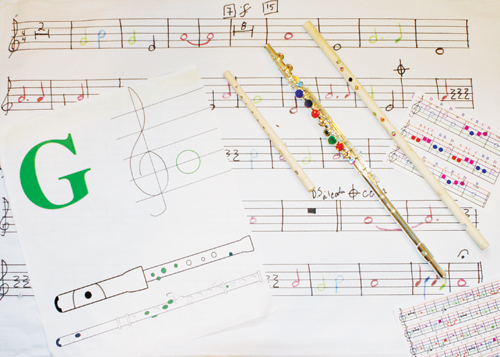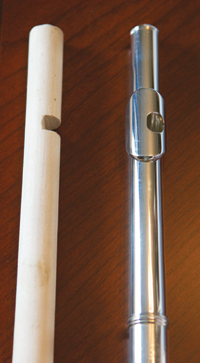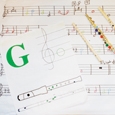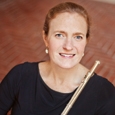
Economic recession has caused budget cuts in public schools across the United States. Music education and arts departments are disappearing from curricula. Some community music centers, afterschool programs, and college outreach initiatives have developed music enrichment programs to partially fill the void. As a professional, experienced musician, I decided to devote some of my time to teaching at a community music center. I expanded a middle school outreach program through group flute classes.
On a cold January morning, the first objective was to recruit ten students from a first-period study hall in a low-income Boston Public School. This supposedly simple act was met with everything from sexual innuendo to calls for my immediate departure. With the help of the study hall teacher, six boys and four girls were reluctantly recruited. Graduate school training did not prepare me for what happened next. I learned that my classroom was to be the opposite half of the study hall room, without any divider, with the remaining study hall students forming an audience.
Previous teaching experience proved useless in this setting. In essence these children were being forced to learn how to play an instrument. High-minded teaching concepts ran head first into the real world.
First day pleasantries were abandoned for fear that any real student interest would be met with ridicule from the eavesdropping classmates. I knew that I had to build capital with my students, and I set a goal for them to play Hot Cross Buns by the end of class.
Very quickly it became obvious that many of the students were functionally illiterate, not fluent in English, weak in math skills, unfamiliar with the U.S. monetary system, and possessed poor dexterity skills. In addition to abandoning more traditional curricular expectations and teaching techniques at every turn, the dilemma became how to not embarrass these already mortified students in front of their non-participating friends. Every aspect of teaching had to be translated into a non-traditional format, including the physical set-up of the classroom, to create a safe, sequestered space. After abandoning the original lesson plan, I literally made do with what I had in my bag for that first class (colored markers, stickers, a forgotten chocolate, an empty water bottle, and a cocktail straw).
Adapted Dalcroze eurythmic exercises allowed students to physically master note durations. Rhythmic values were converted into a series of lengths based on fruit names (quarter notes became grapes, apples morphed into eighths, and plums were half notes). Translation into traditional nomenclature occurred only at the very end of the exercise.
Notation was taught through a color-coded system. The note B appeared in blue, A in red, and G in green. This allowed non-English speakers to find success, as some students never realized that B, A, G spelled a word. Naming the notes with the color names, we sang the song in rhythm, slowly substituting letters for colors. Lastly, we sang it while fingering the notes on the right wrist.
To form an embouchure, students simulated blowing across the lip plate with a water bottle and used the cocktail straw to illustrate the size of the aperture. They competed for a chocolate by blowing through a formed embouchure in an attempt to hold a sheet of paper against the wall. I then slid my finger in and out of the headjoint like a slide whistle to spark their interest to try to produce their first sounds.
I carried over the color-coding to the flute by placing appropriately colored stickers on correlating keys. To combat dexterity issues, students grasped the barrel of the flute with their right hands while their left hands found the colored stickers. Bringing the instruments to their faces, students sang note names while fingering their clunky student flutes.
Putting all of those non-traditional elements together allowed students to successfully blow into their flutes and create sounds after a few tries. Incessant snickers from the other side of the study hall fell silent save for whispers that someone wished they had volunteered. By the end of class, competition ensued to stand and play a solo.
 Many of these students could not take their instruments home for fear of bullying or theft. Lacking a budget, making PVC flutes as a class project was not possible. Instead, I made mock flutes out of dowels, creating a lip plate cutout and indentations for colored tone holes so students could practice by naming fruit rhythm, name-sing-finger rhythm, and blow and fingering rhythm at home. Eventually some students received permission to take home plastic fifes.
Many of these students could not take their instruments home for fear of bullying or theft. Lacking a budget, making PVC flutes as a class project was not possible. Instead, I made mock flutes out of dowels, creating a lip plate cutout and indentations for colored tone holes so students could practice by naming fruit rhythm, name-sing-finger rhythm, and blow and fingering rhythm at home. Eventually some students received permission to take home plastic fifes.
 Each day, every class required the same intense on-the-fly ingenuity to keep students behaviorally in check. Over time, the real curriculum emerged:
Each day, every class required the same intense on-the-fly ingenuity to keep students behaviorally in check. Over time, the real curriculum emerged:
• To learn responsibility to themselves and each other.
• To learn to do their share of a larger task.
• To set and achieve long-term and short-term goals.
• To experience boundaries for the first time in their lives.
• To meet and work with an adult who would not abandon them.
Lesson plans for each subsequent class focused on one of these life lessons as the primary goal with flute playing as a secondary focus. The first class unfortunately dwindled in numbers to two students who performed a concert for the principal, who recorded their efforts so that the students could share their success with their families.
With a second class, I used the flipped classroom model that is gaining popularity today. I did not call it flipped classroom; it was just survival. Students explored at-home instructional materials online or worked with activities from a handout and CD. This allowed class time to be devoted entirely to activity-based exploration.
Their level of inquiry increased, as did their growing confidence. Students became engaged in learning to play, and many showed an increased interest in exploring new avenues. Each class began with students demonstrating accomplishments and then figuring out what take-home lessons were required to learn a piece of music before the next class so that they could be part of the flute ensemble. This led to performances in school assemblies.
These students did learn to read music and play the flute, but it was the coupling of the flipped classroom, creative teaching techniques, and shifting the focus to life lessons that led to their greatest achievements. These students found success and excitement about learning that they will carry with them for a lifetime.






